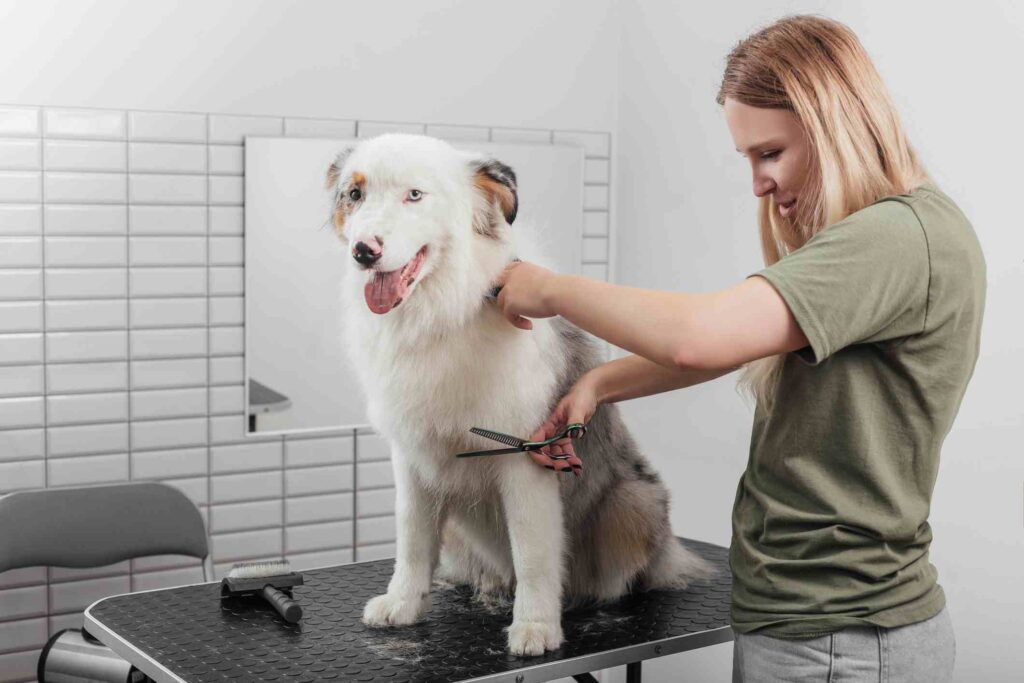Table of contents
Table of contents
As a tradesperson, whether you’re a builder, electrician, plumber, or landscaper, you’re likely to be familiar with the concept of trade associations. But what exactly are they, and how can they benefit you and your business?
Trade associations are essential in many industries, and in trades and construction, they offer valuable support, resources, and advocacy to help your business thrive. In this guide, we’ll explain the importance of trade associations, how they can enhance your professional development, and how to identify if a company is a member of one. Additionally, we’ve compiled a list of some of the most useful trade associations in the construction and trades sectors, making it easier for you to find the right support for your business.
What is a Trade Association?

For the trade sector, these organisations bring together companies, contractors and professionals under one roof to support fair regulations, improve working conditions, and enhance training opportunities. They also help members stay informed about industry developments, new legislation, and best practices, making it easier to navigate regulatory requirements within a Tradesman’s busy schedule.
Being part of an association as a tradesman brings a variety of benefits.
Key benefits
- Legal and regulatory advice – Avoiding fines and staying compliant is a big tick box.
- Training and certification – Want to prove you’re a top-notch tradesman? Associations provide guidance courses and qualifications. These not only develop your skills but look great on your website.
- Networking opportunities – Sometimes it’s not what you know, but who you know.
- Business support – Whether it’s insurance discounts, financial advice, or dispute resolution, they’re on hand to help.
The biggest Trade Associations in the UK
With so many associations to choose from, which ones are most relevant to your trade and worth looking at further? We’ve highlighted some of the biggest and most well-known trade associations in the UK for tradespeople, broken down by trade.
- Federation of Master Builders (FMB): If you’re a builder, you’ve probably come across this one. The FMB supports small to medium-sized building companies, offering training, insurance, and legal advice.
- National Inspection Council for Electrical Installation Contracting (NICEIC): A must for electricians, the NICEIC provides accreditation and certification, ensuring that electrical work is safe and meets industry standards.
- Gas Safe Register: Not technically a trade association but the gas safe register, but if you work with gas, you must be registered with them. This ensures you’re legally allowed to conduct gas work in the UK.
- Construction Industry Training Board (CITB): This training board focus on training and skills development for the construction sector. If you need an apprenticeship or further training, they’re worth checking out.
- Association of Plumbing & Heating Contractors (APHC): The APHC supports professional plumbers and heating engineers, making sure the industry stays high-quality and safe.
- The Guild of Master Craftsmen: Covers various trades and aims to promote skilled professionals who take pride in their work. The guild is more of a quality stamp than a regulatory body, but it still holds weight with customers.
- National Federation of Roofing Contractors (NFRC): If you’re in roofing, this is the UK’s largest association ensuring top-quality standards.
These associations along with many others help keep their industries professional and accountable, ensuring customers receive good service and quality workmanship.
We’ve covered some of the biggest trade associations, now lets have a broader look by trade type.
Builders

- Building & Engineering Services Association (BESA): BESA champions the UK’s building engineering sector by offering expert advice, training, and advocacy to help businesses maintain industry standards and deliver exceptional building services.
- Building Engineering Services Competence Assessment (BESCA): BESCA helps ensure industry compliance and competence by providing accreditation, certification, and assessment services, enabling businesses to meet regulatory standards and business requirements.
- Chartered Institute of Building: The Chartered Institute of Building upholds construction excellence by establishing professional standards, fostering career growth, and advocating for best practices across the built environment.
- Concrete Society: The Concrete Society delivers expert technical knowledge, valuable networking opportunities, and industry insights to foster innovation and uphold best practices in concrete usage across construction and engineering sectors.
- Construction Equipment Association (CEA): The CEA represents and supports UK construction equipment manufacturers, maintaining and monitoring industry standards, global trade opportunities and innovation.
- National Federation of Builders (NFB): NFB represents UK building contractors by offering advocacy, guidance, and resources to promote high standards of professionalism, industry growth, and career development within the construction sector.
Electricians

- Electrical Contractors’ Association (ECA): Representing electrical contractors across the UK, the ECA provides essential training, resources, and advocacy to drive innovation, uphold safety standards, and enhance professionalism in the electrical field.
- Heating Equipment Testing and Approval Scheme (HETAS): HETAS certifies heating products, fuels, and installers to guarantee they comply with safety and environmental regulations, ensuring the safe and efficient use of solid fuel appliances and heating systems.
- Association of Electrical and Mechanical Trades (AEMT): AEMT provides resources and technical expertise to electrical and mechanical businesses, helping them maintain high operational standards and stay ahead in an evolving industry.
Bricklayers
- Association of Brickwork Contractors: The Association of Brickwork Contractors supports brickwork specialists by offering expert advice, training programs, and promoting industry best practices to ensure top-notch craftsmanship and adherence to safety standards.
- Guild of Bricklayers: The Guild of Bricklayers is a respected body that promotes high-quality bricklaying, offers training opportunities and upholding safety protocols to maintain excellence within bricklaying.
- The Brick Development Association (BDA): The BDA champions the use of bricks in construction, offering technical expertise, fostering innovation, and advocating for sustainable practices and superior quality in brickwork across the building sector.
Carpenters and Joiners
- British Woodworking Federation (BWF): BWF represents the woodworking industry in the UK, providing training, technical support, and promoting rules and regulations to ensure high standards of craftsmanship, safety and innovation in woodworking.
- The Institute of Carpenters (IOC): The IOC focuses on supporting carpenters through continuous professional development, providing access to training, certification, and essential resources to enhance skills and maintain standards.
Other trade types

- Chartered Institute of Plumbing and Heating Engineering (CIPHE): CIPHE is a professional organisation that aids plumbing and heating engineers by offering accreditation, training, and resources to promote expertise, safety, and sustainability, while advocating for ethical practices and the value of quality workmanship.
- Architects Registration Board (ARB): ARB ensures that only qualified professionals can use the title “architect” by overseeing education, training, and conduct, thereby safeguarding public interests and maintaining the profession’s integrity in the UK.
- Asbestos Removal Contractors Association (ARCA): ARCA advocates for the safe removal of asbestos by offering accreditation, training and expert guidance to ensure compliance and maintain the highest standards of safety and management in the industry.
- Association of Professional Landscapers (APL): APL supports landscaping professionals by offering resources, training and courses to maintain high standards in design, installation, and upkeep, fostering quality outdoor environments.
- British Association of Landscape Industries (BALI): BALI promotes sustainability, best practices, and professionalism in the landscaping industry, helping businesses create exceptional outdoor spaces and thrive in a competitive environment.
- Confederation of Roofing Contractors (CORC): CORC provides roofing professionals with essential training, certification, and resources to help them adhere to high standards of safety, quality, and regulatory compliance in the roofing industry.
- Contract Flooring Association (CFA): The CFA represents flooring contractors in the UK, providing training, certification, and support to help businesses uphold high standards of quality, safety, and professionalism while advocating for best practices within the flooring industry, ensuring that contractors stay competitive and deliver top-notch service.
- Horticultural Trades Association (HTA): HTA provides support through networking and advocacy, helping horticultural businesses grow while advancing the industry’s development and promoting best practices.
- London Association of Master Decorators (LAMD): LAMD offers training, certification, and support to decorators in London, helping them uphold high standards of craftsmanship and professionalism while navigating the competitive industry landscape.
- Master Locksmiths Association (MLA): MLA represents locksmiths by offering training, accreditation, and resources, ensuring high levels of expertise, security, and professionalism while promoting best practices and trusted services across the industry.
How many Trade Associations are there in the UK?
Would you believe there are over 1,000 trade associations in the UK? That’s a lot of industry groups, covering everything from construction to catering, automotive to arboriculture.
Each sector has multiple associations, often catering to different needs within the industry. For example, within construction, there are dozens of associations dedicated to builders, electricians, roofers, plasterers, and more.
With so many options, it’s important to find the one that best suits your trade and your business goals. Not all trade associations offer the same support, so choosing the right one can make a huge difference in terms of benefits and credibility.
How do you know if a company is part of a Trade Association?
Let’s say you’re hiring someone, or maybe a customer is checking you out. How can you tell if a business is part of a trade association? There are a few ways:
- Check their website – Most reputable businesses will proudly display their membership logos on their website. If they’re a member of FMB, NICEIC, or any other association, it’ll likely be on their homepage or ‘About Us’ section.
- Look for certification – If a company claims to be accredited by a trade association, they should have an official certificate to prove it. Ask to see it if you’re unsure.
- Visit the trade association’s website – Most trade associations have an online directory where you can check if a company is a legitimate member. Just type in their name and see if they show up.
- Ask them directly – If you’re a customer or a fellow tradesman working with a new company, just ask. A genuine member will have no problem proving their membership.
Why should you join a Trade Association?
We’ve covered some of the key benefits of trade associations earlier and ultimately whether you think it’s worth joining one is up to you. It may well be different depending on the trade you specialise in or the type of business you operate.
So, whether you’re an established tradesperson running your own business or new to the industry, wondering whether it’s worth signing up, you’ll want to weigh up how it can enhance your business.
If you’re serious about your trade and want to grow your business, being a member of a respected association can help.
- Make you stand out from the competition
- Give customers peace of mind knowing you’re accredited
- Help you stay ahead of industry changes and regulations
- Provide legal and business support when needed
However, it does usually come with membership fees, so it’s important to weigh up the benefits. If it means getting more jobs and increasing trust with customers, it could be a good investment.
The takeaway
Trade associations are a massive part of the UK’s business landscape, ensuring standards stay high, regulations are followed, and tradespeople get the support they need. Whether you’re looking to join one yourself or just want to know if a company is reputable, understanding how they work can be a game-changer.
So, whether you’re fixing boilers, laying bricks, or rewiring houses, it’s worth seeing what your trade association can do for you. Who knows? It might just be the boost your business needs!
Get Tradesman Insurance from Protectivity
*Disclaimer – This blog has been created as general information and should not be taken as advice. Make sure you have the correct level of insurance for your requirements and always review policy documentation. Information is factually accurate at the time of publishing but may have become out of date.
Last updated by













































